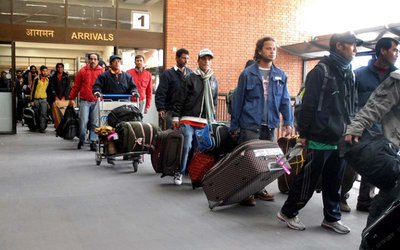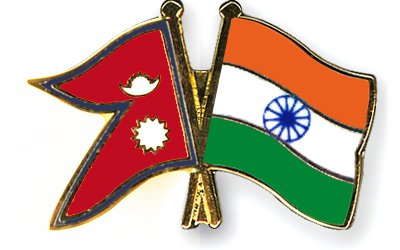
Interpreting Nepal’s Federal Constitution is not an easy task. It’s like opening the Pandora’s Box. Nobody may know the sources and quantity of constitutional ills hidden in the box until the box has not been fully opened during the implementation process. Neither the clarity of ambiguous politico-legal language is possible to understand, as is generally claimed by political scholars in civil law countries, nor can the common law concept of constitutional construction, generally developed through court jurisprudence, be adequately applied. The tools of literal and textual interpretation are useful only if the words and constitutional language are conceptually simple and easily understandable. The constitutional interpretation tools of common law countries fail to discover and explain the true meaning simply because the extremely divided political actors and their legal associates tend to seek the meaning that suits their interest. Constitutionally less enlightened political activists get enough space in the constitutional text to play with and distort the words. The notion of harmonious interpretation hidden in the files of the court system is yet to be used although doors of PIL are wide open and may one day drag the higher courts deep into the political thickets leading to the loss of credibility and public faith.
At these initial years of complex political transition, imbibed with hitherto untested notions of inclusivity, republicanism, secularism, mixed electoral devices, and socialism oriented liberal economic policy, Nepal’s federal Constitution is passing through a very difficult phase of interpretational anarchism. In such a situation, lawyers and jurists have to be very careful in displaying their legal wisdom. What Nepal needs at this point is political seriousness on the part of political party leaders, especially amongst the emerging youth leaders, who see their future in the stable and prosperous democratic Nepal. Equally essential is the role of Nepali intellectuals and media persons to constructively provide knowledge inputs in the nation building process with their competitive knowledge base and multiple sources of information. This is where the legal luminaries come into picture to fuel the political and economic development process with qualitative professional support for creating proper legal and democratic environment that helps pave the path of the country towards peace and prosperity.
No doubt, the Constitution is a democratic document framed by a sovereign Constituent Assembly of 601 elected members. But with excessive and oddly placed elements of constitutionalism which hinders the smooth functioning of conceptual and institutional bases, implementation of the Constitution requires very committed and skilful political leadership with vision and managerial acumen. The current state of post-election scenario, however, is very disappointing. Rather than attempting to untie the knots of constitutional complexities, the political party leaders are engaged in unnecessary and useless controversies. As a result, the country is struck with simple politico-legal puzzles of government formation, role of Upper House and pending Ordinance.
The Constitution in its Article 2 is very clear that “the sovereignty and state- authority of Nepal is vested in the Nepalese people, and it shall be exercised in accordance with the constitutional provisions.” This is exactly how a famous constitutional jurist Thomas Cooley defined Constitution over hundred and fifty years ago as ‘a legitimate vehicle to exercise people’s sovereignty’. Hence, every individual citizen has a sovereign right to interpret the provisions of a Constitution on its own. But final authority rests on the Supreme Court if any controversy arises as to what the words of the Constitution mean. Lawyers and legal scholars are therefore to help discover the true and constructive meaning of those words in the proper context and in compliance with universal constitutional and democratic principles. This is where Nepal’s lawyers have lagged behind, perhaps, due to their political allegiances.
Firstly, with regard to the formation of federal (Central) Government, as provided for in Articles 74 and 75, it is clearly the sole mandate of the House of Representatives to give a government to the country. Once the Election Commission declares the election results of both FPTP and PR processes and conveys the outcome to the President, the parliamentary party leader of the majority party, or in its absence, any political party with support of two or more parties may claim or propose the name of a HoR before the President to appoint as Prime Minister and form a Cabinet. This does not have anything to do with the National Assembly, the second chamber of the Federal Parliament. The 33 percent requirement of women representation in the Federal Parliament as prescribed in Article 84, especially for the House of Representatives (HoR) through mixed electoral process, does not apply to the National Assembly as its nature, composition, role and features, including the electoral process, are totally different from the HoR as is clear from Article 86 and the House of Representatives related electoral laws.
Since the composition of the National Assembly with its 59 members already includes 22 woman members, ie. more than 37 percent, according to Article 86, the requirement of 33 percent applicable to HoR under Article 84 does not attract here. Moreover, the National Assembly members are elected from the electoral college of seven Provincial Assembly Members and the 1506 Mayors and Deputy Mayors from 753 local bodies, individually from each of the Seven Provinces. Hence, conditions of political parties representing at the HoR cannot be imposed on Provincial Assemblies.
The election and appointment process of the Prime Minister by the HoR is totally independent of the National Assembly process which has a check and balances role in the federal policy making and legislative processes.
Lastly, as to the issuance of Ordinances under Article 114, the President as Head of the State, may internally consult with State’s Legal Advisor and other experts and political actors on apparent constitutional issues or any other aspects of national concern, but she has to endorse the incumbent Prime Minister’s advice, as he is the first and foremost advisor of the President also. Since in the changed context, after the results of the federal elections many political parties and their leaders may have different views and concerns, the President as neutral and dignified entity of the nation, does not have any other options except issuing the pending Ordinance, this time on the bill related to the election of the National Assembly. If she does anything otherwise, it will be constitutionally and politically unfortunate. She should not take any political risk which the Prime Minister as her adviser has to take and defend. The political party leaders may have political differences and if consultative process does not help resolve the issue pending since past two months, they may correct if when a new Government is formed. They must accept the rules of parliamentary and legislative games as defined and practiced under universal democratic system.
- The Last Opportunity: The Imperative for Peace and Transitional Justice in Nepal
- Mar 26, 2025
- Revisiting Transitional Justice (Reflections In The Shadow Of History)
- Jan 29, 2025
- Summit For Democracy And Focus On Human Rights
- Jan 22, 2022
- Constitutionality Of Parliament Dissolution
- Jan 12, 2021
- Contempt of Court In Nepal
- Feb 18, 2018













